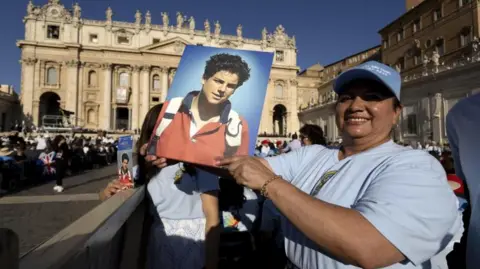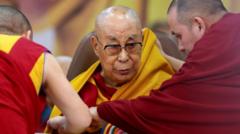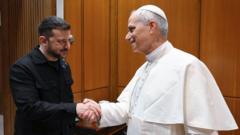The Vatican's Papal Conclave: An Inside Look at the Power Struggle
As the world awaits a new pope, the intricate politics and potential successors emerge from a secret selection process in the Vatican.
The Sistine Chapel is set to host a conclave beginning on Wednesday, a momentous occasion to select a successor to Pope Francis, who passed away last month at 88. A total of 133 cardinals will gather in this sacred space, known for its stunning Michelangelo frescoes, to engage in a potentially arduous voting process that may last for hours or even extend years, reminiscent of past conclaves. According to Jason Horowitz, the Rome bureau chief for The New York Times, the politics involved are intense, marked by strategic maneuvering, alliances, and sometimes deceptive practices with the existence of "fake candidates." Each day, the cardinals will cast their votes via secret ballot, with black or white smoke signaling whether a consensus has been reached. The moment the smoke turns white, signaling a new pope has been selected, reporters like Horowitz aim to provide timely updates and insight into the newly chosen leader’s views and background, all while preparing for the possibility of unexpected candidates emerging unexpectedly.
As the world awaits a new pope, the intricate politics and potential successors emerge from a secret selection process in the Vatican.
The Sistine Chapel is set to host a conclave beginning on Wednesday, a momentous occasion to select a successor to Pope Francis, who passed away last month at 88. A total of 133 cardinals will gather in this sacred space, known for its stunning Michelangelo frescoes, to engage in a potentially arduous voting process that may last for hours or even extend years, reminiscent of past conclaves. According to Jason Horowitz, the Rome bureau chief for The New York Times, the politics involved are intense, marked by strategic maneuvering, alliances, and sometimes deceptive practices with the existence of "fake candidates." Each day, the cardinals will cast their votes via secret ballot, with black or white smoke signaling whether a consensus has been reached. The moment the smoke turns white, signaling a new pope has been selected, reporters like Horowitz aim to provide timely updates and insight into the newly chosen leader’s views and background, all while preparing for the possibility of unexpected candidates emerging unexpectedly.





















